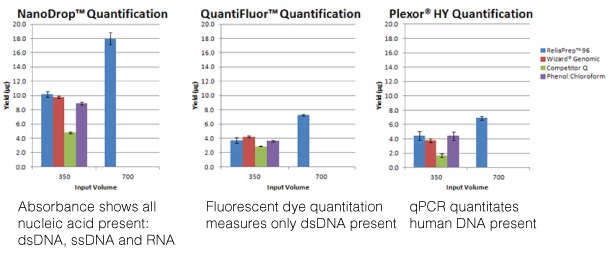I admit to some trepidation about the diseases that may be harbored in my backyard. For example, do the mice in my yard and, despite my and my cats’ efforts, in my house carry deer ticks that harbor the bacterium Borrelia burgdorferi, which causes Lyme disease? Should I be keeping an eye on the vitality of the birds around my property and density of my local mosquito population for potential risk of West Nile Virus transmission? As troublesome as these infections can be, mortality is low for infected humans. Contrast that with the mortality rate of up to 90% for the filoviruses Ebola and Marburg. I find it easy to dismiss these viruses because the reservoir (asymptomatic host) is not in the Upper Midwest but rather Africa, but the tragedy of the Ebola outbreak in the West African countries of Liberia, Sierra Leone and Guinea demonstrates the number of lives lost in an epidemic. Currently, there is no therapy or vaccine to treat these deadly viruses other than transferring antibodies from survivors to those infected. Therefore, the article in Science Translational Medicine about an antiviral treatment that protected macaques injected with a lethal dose of Marburg virus was welcome news.
Continue reading “Promising Treatment for Marburg Virus Hemorrhagic Fever”Author: Sara Klink
Investigating the Role of Hair Proteins in Fighting Cancer
Hair from two donors, a gray-haired elderly man and a young brunette woman, were collected after a haircut and separately processed by activation in sodium hydroxide prior to digestion with pepsin, a protease that cleaves at the C-terminus of phenylalanine, leucine, tyrosine and tryptophan. The digested fragments were extracted, frozen and dried down. The remaining unsolubilized material was dried, ground and redigested with pepsin, yielding two samples of pepsin digests from each hair sample. The final pepsin digests were suspended in 70% ethanol. Continue reading “Investigating the Role of Hair Proteins in Fighting Cancer”
The Role of the Black Death in Human Evolution

Can Fruit Flies Glow in the Dark?
Uncovering the Life and Death of a Mummy

Deciphering how an ancient person lived and died is based heavily on the context of the buried body or mummy, including the soil around the gravesite, artifacts present in the grave and if nothing else, the location of the remains. What happens when there is no context? With skeletal remains or even bone fragments, which is primarily what is found at many burial sites, there is some information that can be derived but mummies that include tissue as well as bone offer a greater opportunity to learn about a deceased individual’s life. A recently published PLOS ONE article of a bog body identified using analyses across several scientific fields demonstrates how we can uncover the story of a person who lived several centuries ago based on her mummified remains. Continue reading “Uncovering the Life and Death of a Mummy”
Fun with Chemistry for Valentine’s Day
Looking for last-minute gift ideas? Wondering what chemistry has to do with Valentine’s Day? The chemists of the American Chemical Society (ACS) have curated a web page called Valentine’s Day Chemistry that offers gift ideas (for example, make a crystal heart using pipe cleaners, borax and hot water), explains the chemistry behind chocolate and flowers, shows a video that equates chemical bonding to people interacting at a party and more. The links and videos offer something for everyone, whether you want to have fun with friends and family of all ages or just want to learn something new about chemistry.
Happy Valentine’s Day!
Amino Acid Analogs as Possible Cancer Drugs

When Did Cats Become Companion Animals?
I am unabashedly a cat person, heavily influenced, I suspect, by the ever-fluctuating population of cats that roamed the family farm. Most of these outdoor cats were skittish around humans, but sometimes there were friendly female cats with a litter of kittens that were fun to chase, pick up and stroke. While the farm’s clowder of cats would eagerly await table scraps my mom would put out in the evening, there was plenty of opportunity for the felines to hunt vermin around the farm. It is this function—rodent control—that may be the reason that many of us share our homes with cats. One hypothesis to explain the association between cats and humans is rodents were stealing from human grain stores and cats could control rodent populations. However, there was not much data to confirm this hypothesis. Recent archeological evidence from China seems to support this view of cat domestication as reported in the Proceedings of the National Academy of Sciences. Continue reading “When Did Cats Become Companion Animals?”
Methods for Quantitating Your Nucleic Acid Sample
For most molecular biology applications, knowing the amount of nucleic acid present in your purified sample is important. However, one quantitation method might serve better than another, depending on your situation, or you may need to weigh the benefits of a second method to assess the information from the first. Our webinar “To NanoDrop® or Not to NanoDrop®: Choosing the Most Appropriate Method for Nucleic Acid Quantitation” given by Doug Wieczorek, one of our Applications Scientists, discussed three methods for quantitating nucleic acid and outlined their strengths and weaknesses.
Continue reading “Methods for Quantitating Your Nucleic Acid Sample”Successful Ligation and Cloning of Your Insert
You have PCR amplified your insert of interest, made sure the PCR product is A tailed and are ready to clone into a T vector (e.g., pGEM®-T Easy Vector). The next step is as simple as mixing a few microliters of your purified product with the cloning vector in the presence of DNA ligase, buffer and ATP, right? In fact, you may need to consider the molar ratio of T vector to insert.
Continue reading “Successful Ligation and Cloning of Your Insert”


